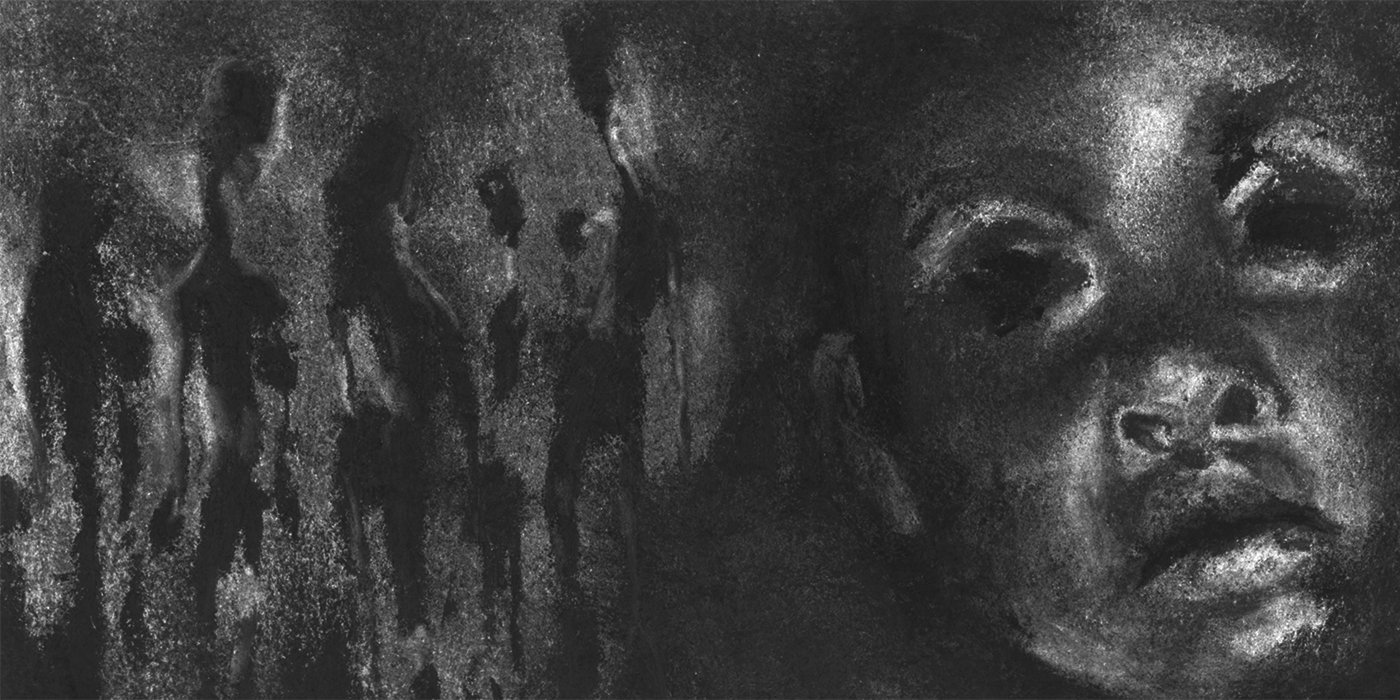
They Burn Witches Here
Art by Alessandra Hogan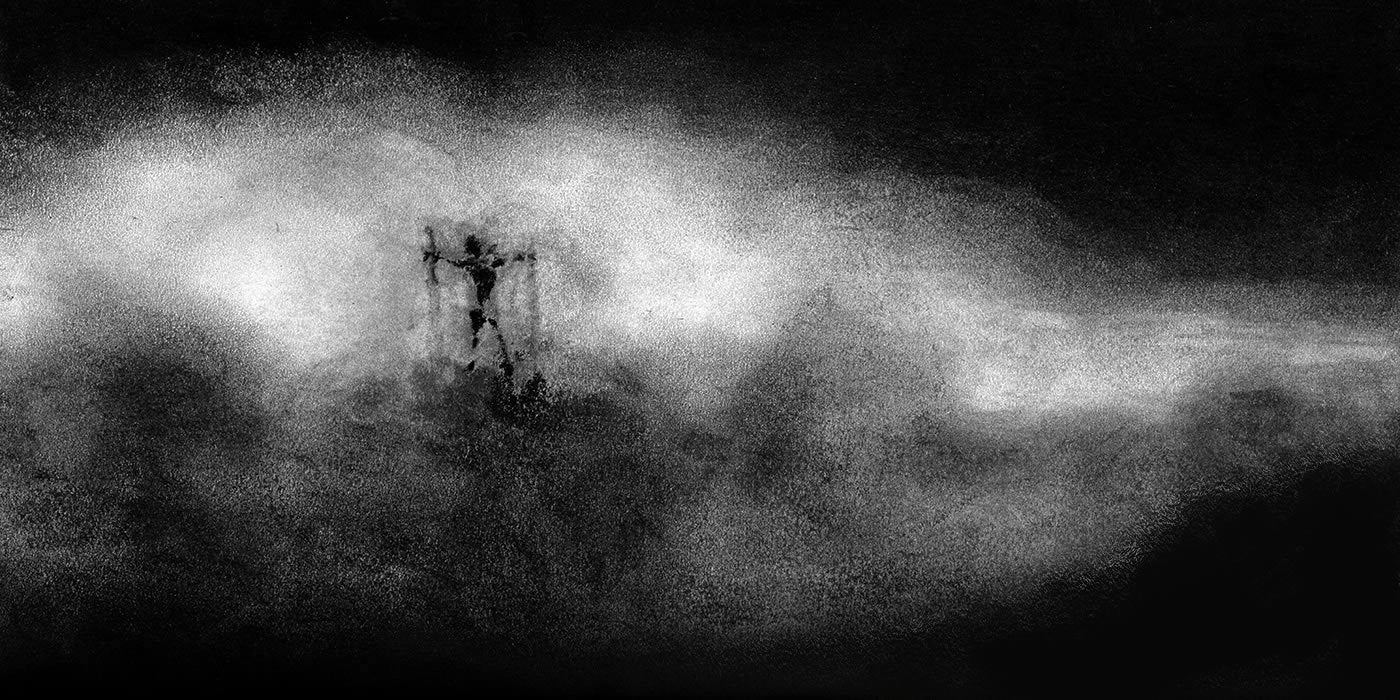
The men pack the witch’s mouth with rags. The time for confessions has come and gone. Neighbors crowd into a circle around her, here on this hill of rubbish next to their settlement, Warakum. They watch as the men blindfold her before tying her arms, legs and stomach to a log. They watch as wood is stacked and gasoline poured. They watch as their witch is pushed facedown onto the pyre. Camera phones are held up and aimed. The match is struck and thrown.
This is the consequence of rending the social fabric, of exercising divisive power, the men say to the thing in their midst. This creature at the center of the settlement dwellers is not a friend or a relative, as the crowd might have once thought. It is a poisonous weed, a snek-no-gut underfoot. Adulterers, the AIDS-marked unclean and witches such as this one—these evils must be uprooted from the community. It has been so for as long as any can remember.
The crowd can feel the shush of the flames against the skin of their faces. Then—a low, wet, chewing sound, a sound like a hive of insects eating and eating, as the fire feeds on the pile of refuse. The men roll truck tires over the witch’s trussed, prone figure. The crowd says nothing. This is self-defense. This is a body doing what a body does when a harmful foreign object is located. It marshals its strength, it pushes the object out, it becomes whole and healthy once again.
The witch was a 20-year-old mother of two who had been blamed for the death of a 6-year-old neighbor boy in her Papua New Guinean shantytown in 2013. Based on his symptoms, the cause of the boy’s death was most likely rheumatic fever. But in PNG, any death that cannot be chalked up to simple old age is believed to have a malevolent agent behind it.
A group of 50 or so of the dead boy’s relatives apprehended the young mother, stripped her, tortured her and burned her alive in the settlement’s landfill, just outside the city of Mount Hagen. A number of bystanders were uniformed police officers who helped turn back a fire engine when it whined to the scene.
This particular witch killing splashed across the homepages of international tabloids because members of the crowd had snapped photos and shared them proudly on social media. Journalists descended, ascertaining a few grisly details as well as the woman’s identity (which cannot be said for many victims of sorcery-related violence in PNG): Her name was Kepari Leniata.
The context that their stories lacked, the thing these journalists neglected to mention, was this: In PNG (which was fully “opened” to the outside world only in the late 19th century), the tradition of witch hunting has not simply persisted in the face of Western intervention—it has become much worse. The ritual is warping, the violence is metastasizing.
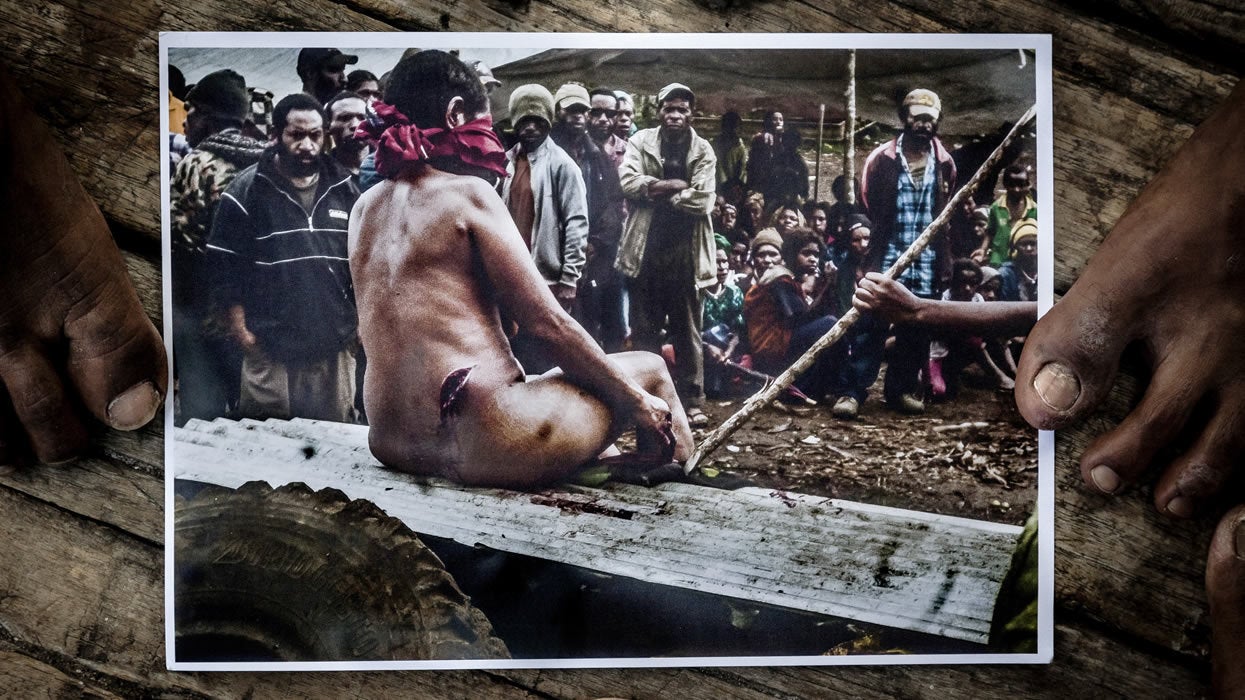
Witch hunts, which had been a part of many if not all traditional Papua New Guinean cultures, are now commonplace throughout the villages, townships and small cities dotting the country. Mobs are publicly humiliating and brutally torturing neighbors, family members, friends—often but not always women—and then murdering them, or else forcing them out of their communities, which in a deeply tribal society like Papua New Guinea amounts to much the same thing.
No one is sure how many supposed witches have been killed—are being killed—in Papua New Guinea. The country’s Constitutional and Law Reform Commission recently estimated 150 killings per year throughout the developing island nation, which lies just off the northernmost cape of Australia. Religious organizations, the people most involved on the ground, dispute this number. The United Nations reported that more than 200 killings take place every year in just one of Papua New Guinea’s 20 provinces alone.
Kepari Leniata’s public execution was at least the third committed at the Warakum settlement’s trash dump between 2009 and 2013. Two more have occurred there since. A third was set to take place in December 2014, near the end of a trip I took to the area in hopes of understanding how and why. How anyone with a camera phone could still believe in witches, and why this violence was now going from endemic to epidemic.
But there, I happened across a most rare thing in Papua New Guinea: an intercession.

I wasn’t prepared for the airport in Port Moresby, PNG’s capital. And I don’t mean that in a kind of Orientalist, “I couldn’t believe the strange wonders I encountered” type of way. I mean: There was hardly any information available. At the time of my visit, Jacksons International Airport was un-Google-able.
Connecting through Tokyo, my flight was listed on the departures board, but it didn’t have a check-in number, a gate number or any status updates. It was the only gap in the stories-high flipboard. When I asked young Japanese attendants for help, their eyes grew wide above their surgical masks.
After an overnight flight, my plane dumped me on the tarmac. The humidity reminded me every step of the way that “the atmosphere” was not a thing that started at some point far above my head. This South Pacific atmosphere was everywhere around me, reaching under my shirt, into my ears, my nostrils, hugging my whole body until nodes of sweat pipped up between the hairs of my eyebrows and mustache. I was drenched in sweat by the time I found a taxi.
Cities were recent developments in PNG, I learned. Anything that we would consider a “development” was recent. As a result, Moresby—pronounced Mosbi in Tok Pisin, PNG’s creole mashup of English, Malay and a smattering of other languages—has neither the bustle of an Indian slum nor the resourcefulness of a Brazilian one. Only 345,000 people live here, and unemployment hovers between 60 and 90 percent. Ashy wood smoke hangs over everything. Each low, cement building is fenced or walled, and the fences and walls are topped with broken glass or razor wire. On one side of the city are bare, brown hills. On the other: a shallow tongue of bay, packed with natural-gas tanker ships.
Moresby proper is largely free from the sorcery-related violence that plagues the rural interior of the country, where there remain tribes of people—citizens—who are living much the same as they have for the last 10 millennia. Still, it is the third-least-livable city on Earth, according to researchers at The Economist, behind Damascus and Dhaka, the city in Bangladesh where a factory collapse killed a thousand people.
The scant number of expats living in Moresby are typically concerned with one of two things: saving souls, or siphoning money out of the ground. The latter, the oilmen, rarely leave the handful of supermax high-rises near the bay. The former, the missionaries, stay in small compounds studded throughout the city. Upon touchdown, I called one such compound named Mapang and booked a shared room.
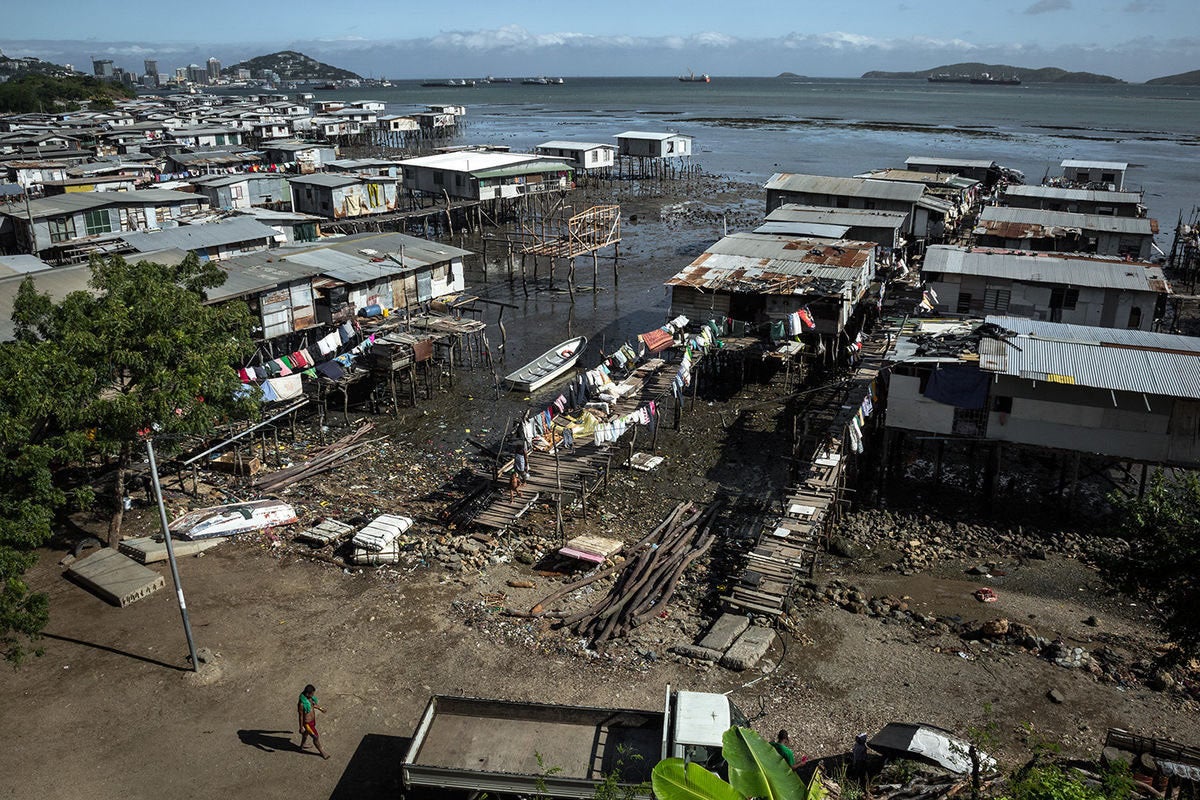
On the short ride there, about a block and a half from the window I’d sleep under, my taxi was stopped at a checkpoint by policemen who wore short-sleeved blue shirts and the bemused expressions of men expectant of bribes. My driver asked them what the problem was. They explained that a few hours earlier, predawn, members of the police and members of the army had engaged in a gunfight right here.
The police officers leaned into the window and searched my driver’s face for any hint of gladness or anger. Any kind of reaction at all. Had we heard about it? they asked. The shooting? This was in Boroko, a relatively upscale suburb of Moresby. There had been many injuries, the police said, and a few unconfirmed fatalities.
Halted for now, my cabby and I got out of the car to take a look around. An informal market was assembling itself on the dried mud beneath a single, bare tree. The ground there was sprinkled with broken glass and the husks of betel nuts.
Practically every man, woman and child in PNG chews betel nut, a mild stimulant. Intense salivation, and therefore a constant need to spit, is its main side effect. Chewing betel nut is technically illegal, but betel nuts were being sold under umbrellas at every street corner. The police who’d stopped my taxi were chewing betel nut. It didn’t matter where I went in PNG—gashes of viscid red spit were everywhere, making the violence seem that much fresher and thicker.
My taxi driver spat carefully but frequently as we walked around the marketplace. With his help, I learned that the gun battle between the army and police had lasted for some four hours. The vendors told us this while spreading blankets, arranging wares, beginning just another day. They explained that soldiers had emerged from a makeshift nightclub late last night and were drinking hard when a police patrol asked them to go back inside. A scuffle ensued, and after one soldier was locked up in the nearby station, the other soldiers returned with reinforcements and sprang their partner from jail, Wild West style. As all hell broke loose, some shops adjacent to the marketplace were looted, and now these looted goods were being put out alongside the vendors’ regular fare.
By the time we got to the missionary compound, my cabbie was demanding 100 kina, or about $40. When I refused and offered him half of his price, he laughed vigorously, as if proud of my aptitude. Then he demanded I high-five him.
At Mapang, there were gates, guards and razor wire. Darting birds and bougainvillea. Tin roofs, slatted glass windows, listless ceiling fans running off solar power. The main room was hung with a portrait of the staff, as well as an admonition to ALERT US if anyone not in the picture was seen walking the grounds.
This was a waystation for missionaries on their way into or out of the bush. That first day, around the breakfast table, I fell in with two of them, John and Marciana. John was a Kentuckian; Marciana, a Floridian like me, albeit from the third and strangest Florida, the Panhandle. They were my age or younger, anywhere from 23 to 30, and they had three little children: two boys and a baby girl, each named something Levitical. John was making them jam sandwiches out of the free breakfast fixings, to save money.
About a year earlier, he’d started a mission deep in the jungle of Gulf Province. “New Guinea’s Louisiana,” John called it, hoping to sum up for me the dire poverty and feverish customs of his village congregants. He’d come with his family to Moresby in order to load up on dry goods. They said I could tag along on their shopping runs.
Marciana had a pinch of moles sprinkled about her mouth and more than a few misgivings about being in-country. “In America, I’m considered black,” she said as we headed for their vehicle, a Toyota SUV with “BAPTIST CHURCH” stenciled talismanically on all four sides. “And here,” she said, “in PNG, I’m considered white. I can’t catch a break.” She smiled, she was being ironic, and then she kept on speaking, branching off on tangents, rarely falling silent whenever I was around her and her family. She seemed genuinely pleased to avail herself of a new audience after months in the jungle. I was reminded then of a term that one of PNG’s great anthropologists, Bronislaw Malinowski, used to describe the effect the bush had on outsiders: tropenkoller, or “tropical frenzy.”
“There were these other two missionaries, older friends of ours,” John said, pulling us into surprisingly thick traffic. “These two missionaries, they got into a bad accident here in Moresby. They rolled their car. And the people, they came running. I mean running.” John had a vacuum-sealed tautness about his body that called to mind fire-and-brimstone preaching; actually, though, he was more that type of chill-dude campus minister.
“The people stripped it of everything,” he went on. “Bags, electronics, seat covers. ‘Run,’ one of the looters told them. ‘Your life is more important than your stuff.’ Our missionary friends said they were more afraid after the crash.”
We drove past a field alive with fires that had been set to clear the brush and scrub around Moresby’s one mosque. The mosque had leopard spots of light shining through its rusty dome. I asked what had happened here. Marciana told me that Americans, unlike Australians, are still welcomed in PNG because Americans didn’t stay after World War II and occupy land. One story goes that, in a show of support post-9/11, the Moresby police surrounded the mosque and shot it up with machine guns.
John and Marciana understood of course that theirs were but the latest in a long line of Western designs on a country well known for rebuffing Western designs. Europeans first set foot here in 1526. But compared to the other New Worlds, this island was hellish: daunting countryside, no obvious wealth, man-eating natives. It remained a lazy and malicious host in the eyes of white men until the mid-19th century. And even then, the British, Dutch, French, Germans, Russians—a thousand Hungarians—continually gag-gifted PNG among themselves.
Most of the contact the white men made was with the tribes of the coasts. Further exploration was rendered impossible by the spine of steep mountains that runs east-west along the length of the island. What lay within these walls—thousands of feet high, with clouds balancing on their rims as if about to tumble inward—seemed dark and unknowable. Until the advent of the airplane.
In the 1930s, two Australian brothers flew into the mountains figuring there to be gold in the remote central Highlands. What they found instead were paleolithic farming villages that had existed, more or less untouched, for tens of thousands of years. There was no metalworking, no domesticated beasts of burden. The Highlanders hadn't had reason to think up the wheel. To them, the two white brothers appeared to be the ghosts of their ancestors, come down from the mist.
In a gesture of peace, the brothers cranked out some Italian opera on a gramophone they’d brought with them. The Highlanders loved it. They clapped and stomped and laughed to the music. The brothers were thrilled. They believed they had transcended cultural gulfs via art. A little later, though, with the help of some pantomime translation, the Australian brothers learned that that was not at all what had happened. The Highlanders fancied the music not because it was beautiful. They liked it, they explained, because the trumpets sounded exactly like the brassy screams of captive women selected for feasting.
The question as to whether this wide gulf could ever have been slowly bridged is moot; this gulf is being forcibly, abruptly sutured shut. In the span of little more than a century, the people here have had to shift from stone to steel to silicon. In some spots, they have jumped directly from hunter-gatherer existence to devotional pictures of Jesus on their iPhones. And the recent discovery of natural gas reserves has only exacerbated change, turning the nation’s previously stagnant economy into one of the world’s fastest-growing.
John and Marciana drove me to Vision City, a three-story shopping mall built recently by Asian investors where, after we had been patted down and metal-detected by a few of the security guards on duty, we ordered dinner at an Australian-themed restaurant that nevertheless had American license plates stapled to the wall. Inside, the wives of oilmen and construction magnates were wearing yoga pants and brave faces. Chinese businessmen were getting absolutely hammered at the bar.
“There’s been a bit of culture clash here between the people and the Chinese who come to supervise investment,” John said, understating the case. He detailed a recent incident in which a Chinese engineer was hacked to death with a machete following an argument with his Papua New Guinean contractors. Next came the tale of the usurious Chinese vendor who was decapitated not far from Vision City.
This influx of foreign influence, money and durable goods has brought conspicuous consumption to PNG, complete with its attendant resentment and envy. Previously, there had been systems of prohibition integrated into many of PNG’s traditional societies that regulated public exhibitions of wealth or standing, such as pigs and shells. The preening of one’s status wasn’t just tabu; it was dangerous. The person who threw many large feasts or cultivated many fruitful gardens ran the risk of making his or her clanspeople jelas, a word that goes beyond mere “jealousy” to convey something akin to “a state of uncontrollable, angry covetousness.” Nowadays, a person can make others jelas by owning a car or running a successful highway-side concession stand. Making others jelas is to be avoided, especially since it is believed that witches are very jelas and vindictive creatures indeed.
“I try not to stop and stare at anything—a waterfall, a pretty tree, that—” John said, nodding at a balcony where the legs of empty chairs were casting lengthening shadows in the face of a limpid sunset. “Our tribe thinks white people have a supernatural power that lets us hear precious metals vibrating in the earth.”
That has been one of the constants, John told me, underlying so much piled-on change: the belief that witches are behind most of the negative transformations rocking PNG. “We call them ‘baby Christians,’” John said of the native population. “A lot of them convert because they want the prosperity they see in Christian nations and cultures. But they just slap it on top of their traditional beliefs.”
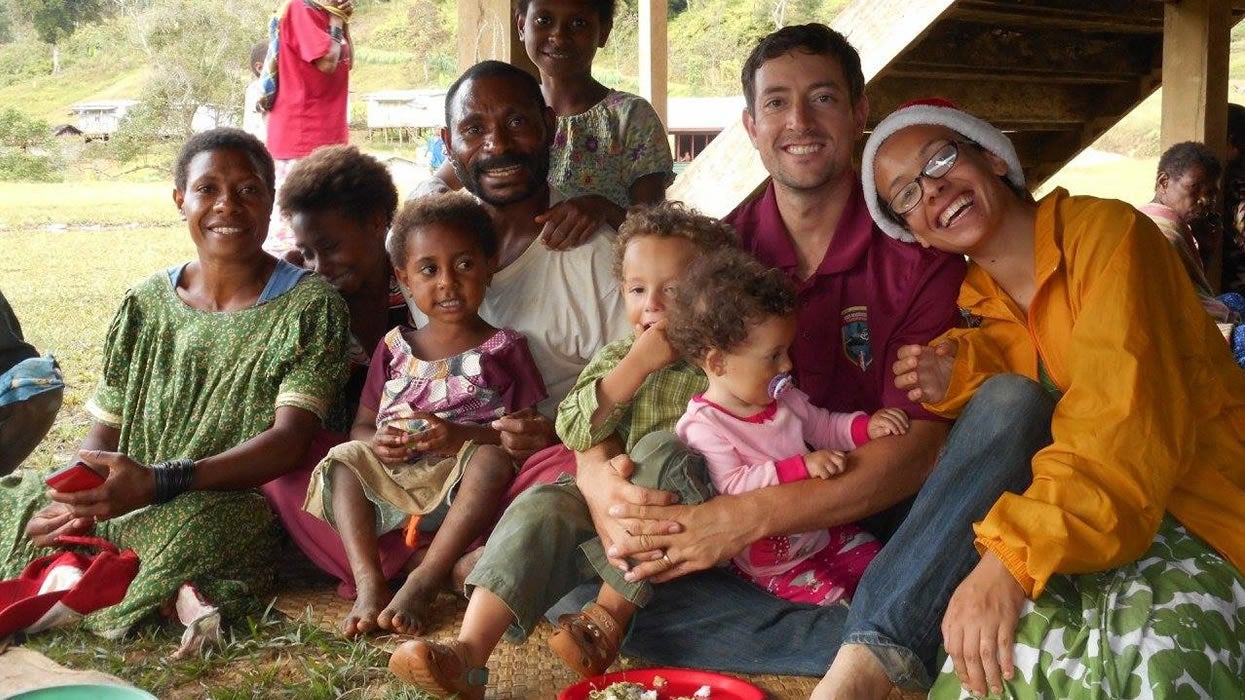
In a nation with little to no infrastructure, missionaries remain a primary point of contact between rural PNGers and the West. Much of the medical care and humanitarian aid dispensed in the bush is still provided by the Catholic and Lutheran churches. As such, more than 96 percent of Papua New Guineans identify as Christian. Yet theirs is a fluid, syncretic Christianity, not unlike the Christianity of the Middle Ages, one that has been grafted onto a long-established cosmology rife with demons, witches and relics imbued with power.
John and Marciana themselves seemed rather gleeful about their congregants’ belief in sorcery. I got the sense that it strengthened their self-conception, their missionary bonafides, as if the continued practice of something as heathenistic as witch hunting made their experience that much more authentic.
“You can’t use logic with them,” Marciana said. “Everything needs to be ‘story.’ You only convince them through narrative. How do you think they passed the time out there all those centuries? They tell themselves stories that make sense of what’s happening to them, what’s going on in their lives. All through the night, until 1 or 2 am. Then the pigs get restless at four, and they do it all over again the next day.”
The first tribespeople John and Marciana encountered at their mission did not have a word for the concept of goodness. There was only not-evil. Likewise, there was no such thing as truth; there was only not-lying. When people died, they became spirits, and the world was thick with these ancestral spirits, who did harm if not appeased. These ancestral spirits were what the people worshipped.
“Papua New Guinea didn’t have a single god prior to the white man,” John said on the drive back to the missionary compound. The eldest of his children demanded that the soundtrack to Disney’s Frozen be played again and again as we sped through streets that had cleared out after nightfall. A few individuals could be seen moving between trees or through doorways under the sodium lamps that had not been shot out. “The people here lived—continue to live—in an enchanted world,” John added. “The line between personal agency and impersonal force is not clearly drawn.”
“Kind of like with Catholics,” Marciana joked from the back seat.
I announced that I was planning to meet up with an accused witch and maybe travel with her to the Highlands, where the sorcery-related murder is rampant. John briefly took his eyes off of the road to stare at me, aghast. “The violence up there spreads like fire,” he said. “If you pick a fight with a guy, you’re picking a fight with his cousins, his brothers’ cousins, everyone.” It would be bad enough if I were simply traveling to the Highlands alone, Marciana said. But that I might be traveling with a supposed witch made matters infinitely more dangerous.
“If anyone begins to give you or her trouble,” John said, “just get out. If you get in the middle, don’t watch. Just turn the other way. Run.”
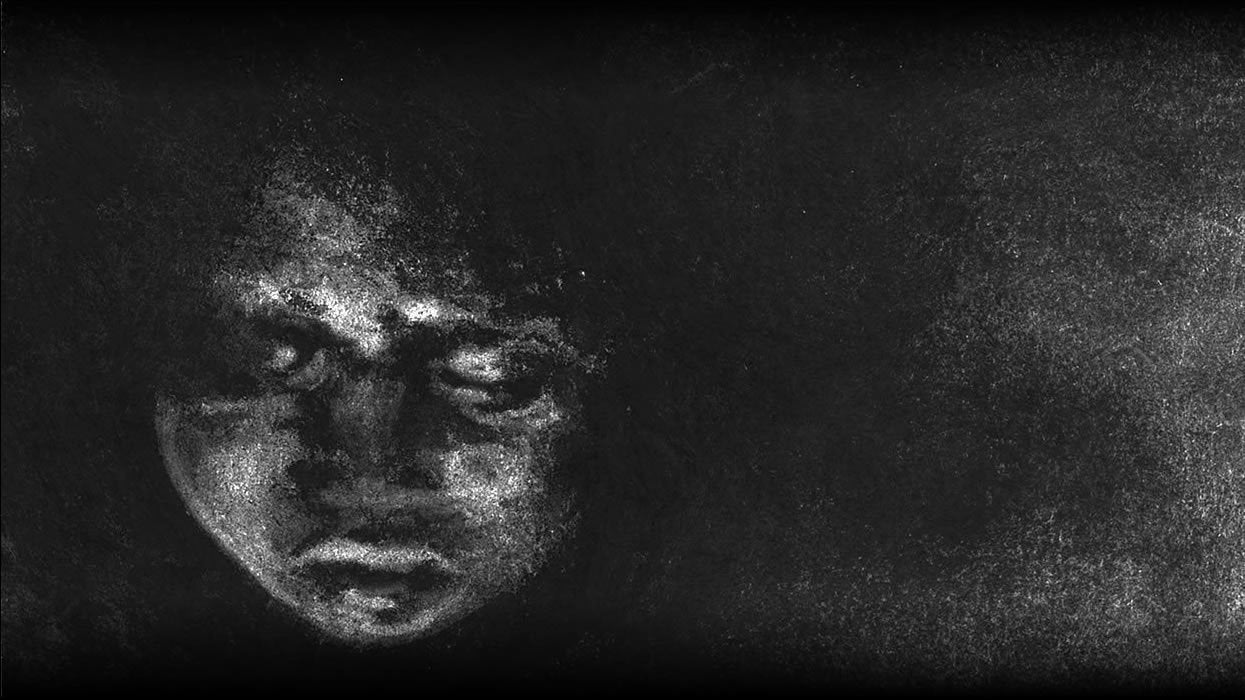
The process begins as it has before and since, in a dirt-packed hut where a family is weeping over a corpse. Some relatives grab at the dead boy’s torso, his arms, his face. Others sit cross-legged, smearing black and white mud on their bodies. Most moan, and their moans swirl around the tight space, harmonizing intermittently. This is their haus krai, the traditional ceremony in which every member of an extended family clan comes and sees and grieves for one of their own.
Watch for fireflies, some men whisper. Watch how they move.
Someone should step on the boy’s lower leg, others say. Step on it and wait for a sign to appear.
These relatives believe the dead boy’s spirit has gone over to a large and borderless place. They are very afraid for him. They are very afraid of him. Most of all, they are vengeful.
They reflect on anything he could have said or done to bring about his misfortune. Did anyone want him dead? Who could possibly want a boy dead? Who was his last contact with? Did anyone offer him food or drink?
Someone should hold a length of bamboo and call out names, one man offers. The bamboo will move when the witch is called.
An older relative speaks up. What about the neighboring wives? she asks. Other women nod enthusiastically. They speculate on the neighbors’ comings and goings in the days leading up to the boy’s death.
Whose behavior had been out of the ordinary? they wonder. Who had been wandering after sunset? Who had been staring?
Who had unsettled debts? Who was jelas?
Sitting or standing around the hut, the women wonder these things while keeping tight control over their bodies. They are being monitored closely by the men. None of the women dares to rest her head on her hand. Such an expression might be taken to mean that she is communicating with another witch. None of them dares to yawn. Covering her mouth might be taken to mean that she has a devil inside her, a devil she wishes to keep. The men watch for such signs, the small details out of place. The women know this, and so grieve theatrically.
One woman coughs. The chatter stops. This woman speaks softly, offering a medical explanation for the boy’s death. It was an ordinary death, she is saying. The boy caught an illness in his stomach. He simply died.
And what caused his illness? shoots back another.
There is only one explanation they can agree on: A witch had extracted the boy’s heart. She had stolen it, and she was eating it piece by piece, savoring it like a crocodile with its drowned prey. If the clanspeople did not hurry, if they did not find the witch and retrieve the boy’s heart, he would surely walk alone in the spirit world forever.
The younger relatives do not know much of their tradition. Their tradition is contained by no book or photograph; their tradition had been one unbroken story passed from lips to ears. Yet they know of this—witchcraft, sorcery, puri puri, mura mura dikana, kumo, sanguma. The young have been told that the witches are behind their people’s unraveling, and they have been taught to fear them very much, regardless of what the missionaries and the white men say. How can the missionaries and the white men say that sorcery isn’t real while also talking of a good God? If God is good, who is doing evil in His world? No, evil is real. Witches are real.
It is decided: The relatives will hire a glas meri, a witch who now uses her powers for good. For a large fee, the glas meri will divine for them the one responsible. And then they will capture this evil creature. They will retrieve the boy’s heart and destroy the witch before she can bring more chaos upon the people of the settlement.
The United Nations' worldwide Human Rights Day coincided with my time in Moresby. Speeches and seminars were held in a hotel’s dusty conference room, where many women in long, flowing, floral-patterned gowns known as meri dresses explained how bad things were to a few white U.N. agents. Two male members of parliament were present, saying things like, "Gender-based violence is the most pressing human rights issue in our country."
Whenever a speaker intimated anything relating to change or optimism, 60 people clapped politely, and one woman in a meri dress laughed hard. She was seated in the rear of the room, where she was free to throw back her head and flail her arms with each bright, three-note titter. This was Monica Paulus, the witch savior of Papua New Guinea.
About 15 years ago, Monica had been a typical PNG wife, caring for her children and her many subsistence gardens, until her father died suddenly from a heart attack. As the eldest child, she was entitled to inherit his house, but her younger brother wanted it badly and accused her of killing their father with witchcraft. Jelasy like his is very often a motivating factor in Highlands witchcraft accusations. The accuser knows that the supposed witch will be killed or forced to flee, leaving the object of his jelasy—the witch’s house, possessions or land—free for the taking.
“I walked away for some time, lived in another province for some time,” Monica told me, demurring when I asked how she had escaped torture. But she couldn’t ignore or rationalize the violence anymore, now that she had been in the witches’ position. “So I came back to [the Highlands] where it started."
Monica now spends her days assisting supposed witches by hiding them in safe houses, relocating them to new provinces, providing them with food or medical care and presenting their cases to anyone who will listen. They are primarily women, and often they bring their children with them, because in many of PNG’s traditional systems of belief, evil spirits reside in the womb. In return for helping these women, Monica and a number of her female colleagues receive death threats every day.
Before leaving New York to come to PNG, I’d done a small bit of correspondence with Monica via email and patchy Skype. We were able to piece together an understanding: She would show me around the country, and I would bring outside attention to what I saw. Aside from that, she said, all she wanted in return were a few cans of duty-free beer.
After presentations on rape and spousal abuse—marital rape wasn’t criminalized in PNG until 2003, and spousal abuse not until 2013—Monica got up in front of the room and delivered a presentation of her own. Her head barely peeked over the lectern. She had a tight perm, black as a burnt match, and the stout physique that is most prevalent among PNG's Highlanders. It's a build and bone structure that screams pugnacious.
“I felt like, 'If I don't do it, who else is going to do this work?’” Monica said over the clatter of porcelain, as servers set down coffee and sandwiches in the rear of the room. Someone asked how many lives she’s saved. Monica said that she wasn’t sure. At least 20 in the Highlands. She couldn’t think of anyone who was doing this work before her.
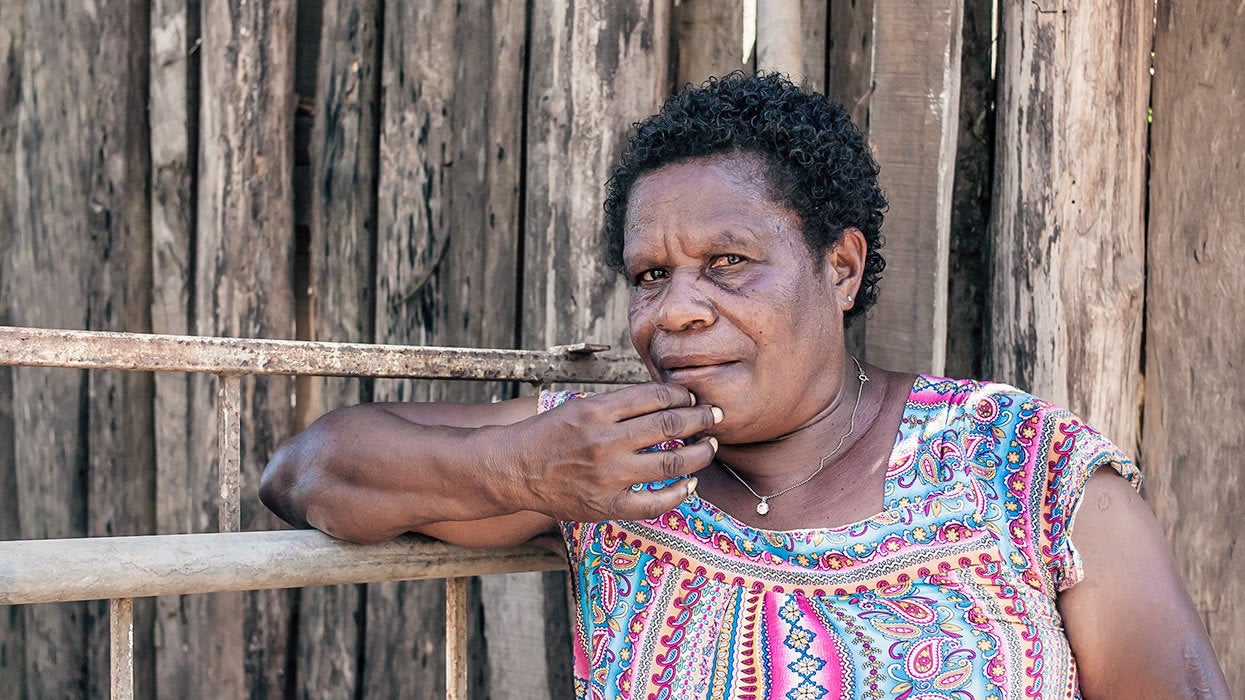
Which was not to say that there's no such thing as practitioners of the occult arts, Monica clarified. There were—and are—people who engage in witchcraft, sorcery, sanguma. The rites are passed down, the spells fiercely guarded. "It is not just that it’s practiced," Monica said. "It is that everybody believes in it. The prime minister believes in it. The police chief in the city of Kundiawa believes in it. They had a national sorcery conference last year, an academic conference, and more than half of the scholars in attendance said they believed in witchcraft.
“I believed in it, before I was accused,” Monica admitted. When she was younger, she was sure that witches were behind the unseen, unencumbered forces pulling her land apart. She believed that their terrible crimes must be met with an equally terrible punishment. She threw her head back and laughed.
Until 2013, the right to kill a witch in self-defense had been codified in PNG’s constitution, under a provision known as the Sorcery Act. Faced with international pressure post-Kepari Leniata, the government repealed the act and reinstated the death penalty for cases in which an accused witch is murdered. But Monica believed that the death penalty made things more dangerous for her, as those complicit in the murder of a witch—in many cases, whole villages—would sooner kill a compliant witness than face prosecution.
“Talking to people outside of my country, I will tell them I was accused as a witch," Monica said. "But within my own country, I don’t say that a lot. There are people who will say, 'OK, because she’s doing this work, she’s supporting her kind. She’s helping witches like herself.'”
Monica gestured with a notebook in hand. In it were the phone numbers and addresses of practically every suspected witch in PNG. Its cardboard cover had gone limp and cottony from handling. “You can do something,” she said, scanning for the white faces in the audience. "Are you interested in saving lives? You’ve got the money, you’ve got the resources there.” She outlined her ideal set-up: rapid-response teams situated throughout the country with access to vehicles, gasoline—and sums of cash to pay off mobs of would-be killers. “If you want us to do it … give us the necessary things we will use to do it, and just get out of our way."
The white U.N. agents as well as the women in meri dresses applauded her. They applauded everybody. Today was a day for acknowledging that PNG was in the depths of a crisis. Tomorrow, and each day after that, was for combatting the paradox at its center: How does a nation outlaw its ontology, its belief?
Once Monica came down from the dais, I introduced myself. She hugged me and told me to gird myself for the Highlands, where the culture remains overwhelmingly, defensively masculine. We would attract a lot of attention, she said, because associating with a woman in public is considered something of a sign of weakness. In the Highlands, you suffered offenses according to your ability—or lack thereof—to protect yourself.
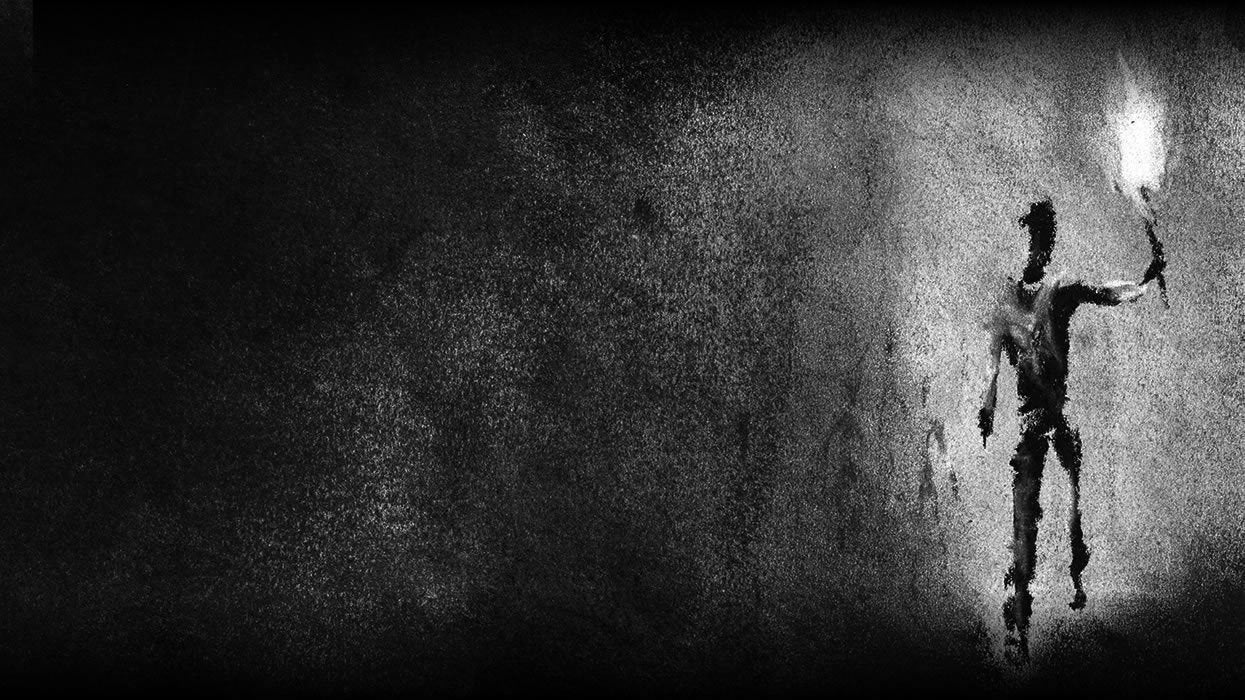
The glas meri divined three suspects for the dead boy's relatives. Two were elderly women who had come to Warakum from the province of Chimbu, which was notorious for its witches; the third was a 20-year-old mother from the grieving family’s own ancestral province, Enga. It was one of these three that stole your son’s heart in the night, the glas meri explained.
And so, the men of the dead boy’s family tracked down the two crones who were hiding in the bush. When the men apprehended them, they wondered of them, If you are innocent, why did you flee?
The men struck a fire. They thrust iron rods into the flames, and they turned them until their upper lengths glowed orange to white. If you are innocent, they wondered of the women, why do you fear?
The men tore away the women’s clothes. They struck the crones, who cried out. The men knew that their blows would simply bounce off of them if they were witches. Witches have skin like rubber. Not only this: If they were witches, their treachery would include crying out that these blows were harming them, even when the blows were not.
How can you defend your actions? the men asked. How can accused such as you be defended? By witnesses? Witchcraft is, by its evil nature, an invisible crime. Who may possibly be witness to it? The witch and the victim, they said. None other.
We can’t expect you to accuse yourselves, can we? they asked. We must rely upon your victims. And they do testify. The body of the child you killed did testify. The good sorcery of the glas meri saw to that.
The men removed the rods from the fire and applied them to the skin of the witches, which closed over the wounds even as the hot irons were being applied. The men were deaf to their cries. Tell us where you put it, they demanded. Tell us where you put the young boy’s heart. Give it back to us so that we can make him whole again. Tell us where you put the heart so we can bring him back.
It wasn’t us! the crones said, sounding exactly like begging women. Please! they screamed.
Give us the name of the real witch, the men demanded. They rolled the irons through the coals.
Yes! Yes! the pair said. We admit to practicing sorcery! But we did not practice it on that boy. We had nothing to do with that boy.
Kolim nem, the gang demanded. Call the name.
Spare us, and we can tell you who did it.
Kolim nem.
The girl, they said. The third one. Kepari Leniata. They said the name over and over. A timeless wail: Not I, sirs, but her.
Monica and I dropped out of dense, milky clouds as our propeller plane neared the small city of Goroka. Below us, swaths of algal-green jungle retreated from the spine of PNG’s central mountains. Gullies were veined with thatched and smoking villages.
The Highlands are a kind of agricultural island within an island. The nation’s only arable land allowed complex societies to entrench themselves. More than 800 languages, or about one eighth of the world’s linguistic total, are spoken here. Yet so many distinct languages developed across this craggy terrain because Highlanders tended not to venture more than 10 miles from their familial village over the course of their lives. Of the three options available to anyone making contact with another—confrontation, retreat or dialogue—history seems to indicate that the Highlanders most often opted for confrontation or retreat.
But in the past decade or so, Monica told me, scores of these villager-farmers have been trickling down from the mountains. They’re looking for work in Mount Hagen and Moresby, where Exxon expects its newly switched-on pipeline to more than double GDP. That, or they are themselves refugees from sorcery-related violence. These migrants live in crowded shantytowns on the cities’ outskirts, surrounded by strangers from far-flung clans. Men grow frustrated, and turn to powerful home-brew alcohol known as stim. Sometimes, they join up with bands of criminals known as raskols. Theft, rape and murder abound in the settlements.
At the same time, the migrants are bombarded with images of Western culture and status. 1 They have satellite televisions and smartphones. They watch expats speed through their settlements in bulletproof Range Rovers. And their capacity for jelasy—as well as their keenness to detect potential sorcery—increases proportionally. These migrants, vulnerable people cut off from their support systems, see in the ruthless methods of Highland witch hunters—methods perhaps discussed with a new neighbor or an acquaintance on social media—a form of collective action that might be powerful enough to check the forces of entropy.
And, should some of these migrants return home, they bring with them this new, more virulent strain of the ritual. Traditional communities no longer decide upon their witch, enter her hut under cover of darkness, stitch her into a bag and toss her in the river or off a cliff. Now, suspected witches are tried publicly before they are roasted over open flames, crucified, dragged behind vehicles, strung up and beaten to death, buried alive, beheaded, forced to drink gasoline or stoned.
“It is the blowing of the wind,” Monica said. “It moves everything now.”
A few hours before we left for the Highlands, Monica had received a frantic 4 am text message from the executive director of an Australian NGO. A suspected witch was being tortured and interrogated in the Mount Hagen settlement of Warakum. If Monica couldn’t organize a rescue operation in time, another execution would take place at the Kerebug dump, the site of Kepari Leniata’s death in 2013.
Off the plane, the thin, gray air of Goroka felt like a physical relief following Moresby’s stifling closeness. Monica led me toward the Lutheran Guest House, pushing our way across a trampled field where some men were doing a brisk business selling actual snake oil from the bed of a Toyota Hi-Lux. “Now we will see what good the U.N. delegation was, in how the Hagen human rights defenders respond," Monica said.
Monica has lived in Goroka since May 2014, splitting time between the houses of several friends. It’s not exactly safe for her here, but she continues to work out of this small valley city because it is accessible to PNG’s one highway through the mountains, meaning she can get to the sites of potential witch killings relatively quickly. The village where she grew up is in the adjoining province of Chimbu, yet Monica rarely returns for fear of reprisal; according to the twisted logic of the witch hunt, the fact that she was able to flee confirmed Monica’s guilt in the eyes of her community. Her clanspeople ended up setting fire to her house.
This was perhaps the most important thing to understand about the brutal nature of PNG, Monica said—no one owns the violence in this country. There is no monopoly on it, state-held or otherwise. PNG counts about 4,800 police officers, total, for a far-flung nation of seven million. And this constabulary lacks everything from uniforms, to pay, to fuel for their vehicles. To file an assault report with the police, one must first obtain a medical statement, which costs more than most Papua New Guineans can afford. Also, a victim has to provide investigators with gasoline. All of which keeps the likelihood of a criminal’s being caught and prosecuted in PNG hovering around 3 percent.
At the Lutheran Guest House, Monica made a command center out of the upstairs common room. She got on the horn—in her case, an Android handset with a wonky battery—and called Cathy Wali, one of the defenders from Mount Hagen. "Cathy," she said, "go to the police station. Collect information from locals, but be careful! You don’t know who’s a perpetrator. … No, no, just tok tok with some of them around this place. See if the woman is still alive, or if they are already gathering the tires."
Purple clouds time-lapsed across the open windows before a lightning bolt spiked a nearby radio tower, causing us both to shrink into a cringe. From the couch, Monica sent a text to the NGO director who first alerted her to the new Warakum witch trial. The director texted back, saying that he was in communication with the Mount Hagen Family and Sexual Violence unit. He was on the case, he reassured her. The lights in the Guest House flickered, and then they went dark.
Monica tried to make a few more calls, but her phone ran out of prepaid minutes, so we walked to a liquor-store hut down the path from the Guest House. There, I bought her a few phone cards; she scratched off their access codes while "Santa Claus is Comin’ to Town" played on a boom box behind the chicken-wired countertop. On the way back, we saw that the Mount Hagen Family and Sexual Violence unit’s truck was nowhere near the Kerebug dump, but here, in Goroka, parked in front of the one Western-style restaurant in town.
Monica’s reactivated phone buzzed with backed-up texts and status updates. She tried the Australian NGO several times; her calls went straight to voicemail. She tried the director’s secretary. “Me, ah, Monica here,” she said, sliding from Tok Pisin into English. “A woman has been held hostage, and they are preparing to burn her maybe tomorrow or tonight. … The police and the team in Hagen are not responding. … I just want you to help me to get other people at the national level so we could all work together to save this woman, before these things happen? Pleeeease? Yes, now! Because they will kill her.” Monica hung up.
As rain fell, thickening from light to torrential in a matter of minutes, the common area grew very dim. Monica gripped her phone and whispered, Come on.
“It is the same people as were involved with the Kepari Leniata case," she said. "I am absolutely sure of this."
A few hours later, a new message announced itself. It was from the NGO director, a Facebook post that read: "Hi Monica—People are watching an helpless lady. Please can you please intervene before she is tortured to death. God please help save this young girl dying in the hands of those heartless animals." The comments laddered underneath the post said things like, "Monica, please!" "Come on, Monica!" "Do something!” Monica wondered aloud if these people weren’t themselves in the crowd, doing nothing.
“I’m trying to do something on the ground, and you’re posting on Facebook?" she asked the absent director. "What is it? Am I God? Do I make miracles? I am sorry for this woman, but what else can I do?”
The common area was almost completely dark, and rain drummed steadily on the tin roof. Curtains were billowing with gusts of wind before collapsing against the open windows. Finally a call came in from Father Phil Gibbs, a missionary from New Zealand and 40-year veteran of the Highlands. Monica gave him the rundown. Father Gibbs jumped into his car and drove post-haste to Mount Hagen from Enga Province, where he’d been helping four unrelated women go into hiding following their own witchcraft accusations.
Throughout the night, Monica continued to act as a kind of conduit, an emergency switchboard operator receiving warnings, relaying messages and scrambling first responders. At 4 a.m., she finally tracked down someone willing to rent us a vehicle—the provincial police commander, who wanted $400 for the single-day use of his newish van, and who also wanted nothing to do with the rescue operation we were undertaking.
Twenty-four hours after we had been alerted to it, Monica, myself and an imposing driver named John sped toward the torture at the Kerebug dump. We were going to save a life, I kept telling myself, even as my breathing grew shallower. Monica and John carried no weapons, but I made note of the heavy wooden truncheon that was rolling along the betel-stained floor of our van as it climbed the Highlands Highway. I was struck by the lightheadedness that comes with the sense of having lost control of events. We were going to disrupt the ritual. That, or discover another unidentifiably carbonized body in the community’s ash heap.
It was 110 miles from Goroka to Mount Hagen, but the trip took more than half a day, as the highway’s asphalt had been chewed to gravel by processions of heavy-duty energy-extraction machinery. The jouncing was physically exhausting; at particularly steep junctions, it was terrifying. Monica pointed out the new liquid natural gas pipeline that ran through the Highlands to Moresby and explained that the distribution of its royalties would be yet another point of contention for clans who already fought frequently and viciously over subsistence farmland. We passed many unpaved turnoffs that led to webs of these clans’ villages branching up- and down-mountain.
Each of these villages held at least one story of sorcery-related violence. While in the Highlands, I heard some of them. I heard the story of a parliament member who tortured his wife for his typhoid. After accusing her of hexing his water, the MP invited the police to come by and watch his wife’s ordeal, so they could ensure that everything was proceeding accordingly. I heard the story of a girl who was forced out of PNG altogether because she shared betel nut with a warrior who later died a coward’s death in a tribal fight. The rest of the girl’s family still lived among her accusers, in fear, because they didn’t want to lose their land. "Every week, they pull a woman out of the river without a head," the young girl’s mother told me when I spoke with her. "It’s happening. Tru tru. Like pulling fish."
I also visited a village not far from Monica’s in Chimbu, a part of the country where an estimated 20 sorcery-related murders were committed every month. There, I was granted an audience with its young, progressive, college-educated chief-in-waiting. He was named Anton, and he referred to witchcraft and sorcery-related violence as “a challenge to development.” He took me up a low bluff and swept a hand over the land that would become his. I noticed a couple of charred gaps between huts and asked what they were. "We had to kick out two families, for witchcraft," he said. "A young man died. A young man my age, college-educated. Over there. You can see his grave. After much internal debate, we decided just to force them out and take their lands. Not kill them."
Anton emphasized that it was natural—it made sense—for the average Papua New Guinean to believe in witchcraft. It is the belief that undergirds society; it’s what has upheld order in the absence of strong, centralized government. The great danger in a place like PNG, where there is no real judiciary, where allegiance is tied to blood, is that reprisal will come back around, again and again as in the “vicious circles” of family vendettas and gang wars, force fueling force like a fire fed on the very things thrown over it, the attempts to snuff it out. As such, violence and death must be contained, regulated and explained through the framework of something like witchcraft.
“You visitors,” he told me before sending me off for the day, “you don’t understand—you don’t well understand—that we want to keep this tradition. This is our tradition. This is where the strength of our communities has traditionally come from. Our social harmony was going along until the white man arrived. There wasn’t torture until now. You intrude, and suddenly the things that used to go smoothly no longer do.”
The sun was high by the time Monica and I reached the wide, unpaved roads of Hagen’s outskirts. Discarded playing cards were sprinkled every couple of steps; gambling was considered such a problem here that police liked to go around forcing poker players to chew and swallow their hands. Monica laughed as she recounted the two times she’d been robbed in Hagen. "They didn’t stab me, at least," she said. She told me about an Australian photojournalist she took to the Warakum settlement. He had been assaulted and relieved of his equipment. "I don’t like to get out of the car," she said. "Except in Father Gibbs’ mission."
When we reached the mission, a sprawling compound of low buildings painted a Marian combination of sky blue and white, we drove the length of its muddy byways several times over, searching for Father Gibbs. Monica grew frenzied. She pushed herself halfway out the van’s open window, screaming at gardeners and nuns, “Where is Father Gibbs? Please!”
Finally we found him walking to his shack at the rear of the compound, a thin older man belted tightly into too-big secondhand clothes. When he saw us, he nodded and held up his palms at chest-level, to calm us. “It’s OK!” Father Gibbs shouted, smiling. The eyes set into his washed-out face glowed glacially blue. Monica and I jogged to him, our jabbered questions wrestling for primacy. He invited us into his shack for tea. "She’s fine,” he said. “Margaret is fine.”
Father Gibbs told us that, apparently, the information Monica received from the Australian NGO was secondhand, and about 12 hours old. “We can thank Facebook for the confusion,” he added. Then he played Margaret’s video testimony, which he had just returned from recording.
Her split and swollen face appeared onscreen, where she said: The dead boy had been very close with her. She had often fed him in her shack, the same Warakum shack she has lived in for 16, 17 years. Margaret fought with this boy’s mother sometimes, but that was natural, who doesn’t argue? “We share betel nut, smoke, money and food with each other,” she said. Yet her sister-in-law’s son died, and two days later at the haus krai, one of the boy’s relatives fell into a trance. She began to wail and speak in tongues, she touched the dead boy’s chest, she claimed that two women—one black, and the other a lighter shade—had stolen the boy’s heart. “Two women were involved, but after further discussions and gossips about my past arguments with my in-law, they included me also,” Margaret said. “You know how women talk when they are together.”
The dead boy’s father got drunk, took a long iron rod and beat Margaret with it. Then, the male neighbors up and down her street joined in. “They attacked me until I thought I was going to die,” Margaret told the camera. “I am a sinner, but that moment I prayed to the Lord and said, ‘Lord, the ordinary people cannot see the inside of me. They cannot operate my skin or body to see my inside. Only you know my inside and my thoughts. I am dying, so I give myself to your hands.’ ... They told me to sit on a chair beside four tires they lined up. They told me, ‘You will sit on the tires and we will burn you.’”
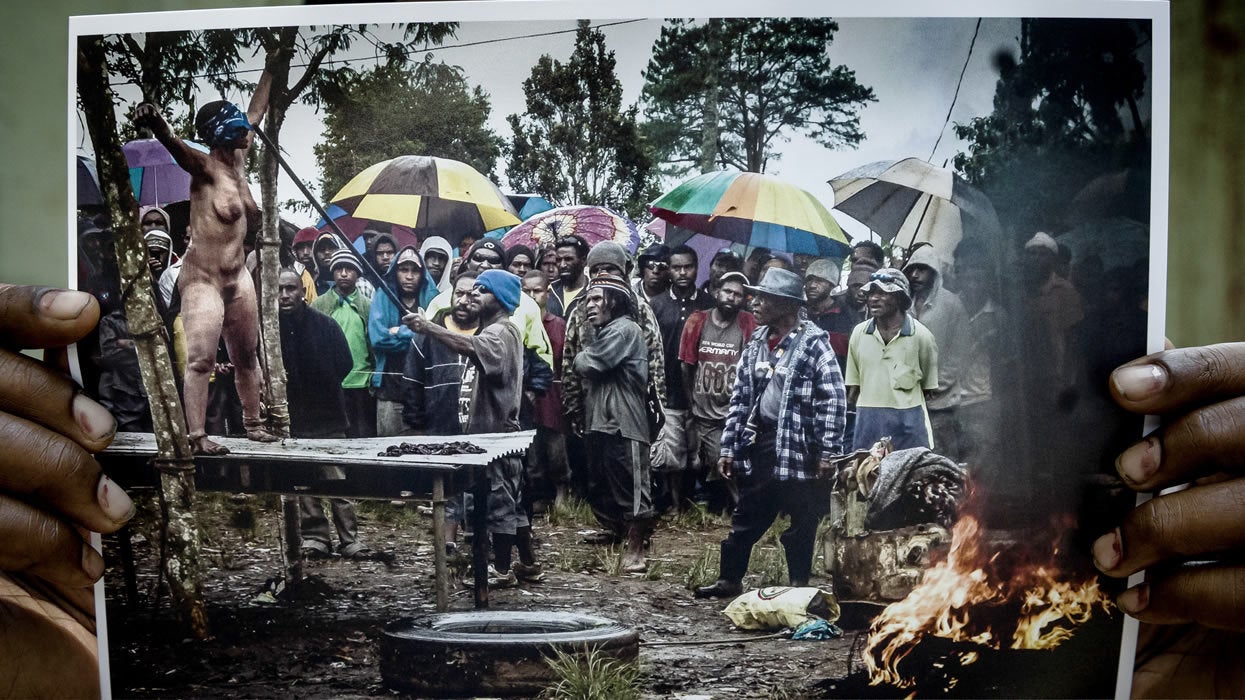
"By the time I got to the settlement," Father Gibbs said, "she’d been freed by her husband and the police. I went to the hospital, but she’d already been sent home.” Both he and Monica were shocked that the police intervened. They thought it might have had something to do with a very recent civil disturbance in Hagen, one in which some clanspeople beat a police officer to death after a traffic accident. Tensions were high, and the police were more likely to flex their muscle.
“The problem," Father Gibbs continued, "was that she had named two more people under torture. She named two more women who were known to have 100-kina debts with the deceased boy’s family." This case wasn’t resolved, they knew. They had not escaped its gravity. Within days or weeks or months, they’d likely have to scramble to save a life related to this boy’s death.
We got up to go. Monica told Father Gibbs that she’d see him sometime soon. I was relieved. Relieved that this woman, Margaret, had not been killed. But there was a truer, more selfish relief effervescing under that one: I was relieved that I did not have to stand up to unanimous violence and act as intercessor. I did not have to do what Monica does every day.
After that, I asked to be taken to Warakum and the Kerebug dump. Monica refused to leave the van. Our driver John did likewise. Warakum was dirt trails, corrugated shacks, scaly dogs and nothing green. I sensed that I was being watched by many eyes. I walked over to Kerebug. There, swineherds tended to their pigs as they rooted through the plastic bags, sodden cartons and discarded tires. Clouds seemed to be wrapping themselves around the mountainside like bandages around a head.
The graveyard where Kepari Leniata’s body lay in an unmarked grave was across the street from Kerebug. Most plots had small cement structures built over them, to deter theft and evil spirits. Some young men with machetes and homemade guns were settling down for the night; they were paid to guard the corpses left out in the open.
It was something of a miracle that Kepari Leniata was buried at all. Her body had decayed in the Mount Hagen morgue for nine months before one private citizen finally took the initiative to have her interred. The government had yet to even issue a certificate of death. At the time of this writing, they are still holding inquiries into her murder. The Western Highlands Police and the offices of the State Solicitor, Public Prosecutor, Solicitor General, Court Clerk and Coroner, as well as the Mount Hagen General Hospital morgue’s officer-in-charge have been summoned to provide evidence. They’ve attested that they have none. No family members or community leaders have come forward on behalf of the deceased.
The people I stopped in Warakum told me that they didn’t know anything about Kepari Leniata’s murder or the murders that came before and after hers. They stared at me, or they laughed, or they answered derisively in creole. To them, I was an interloper, someone outside the circular, self-perpetuating system of their belief. It was pointless to talk to me.
I was reminded of something Father Gibbs, Monica, John and Marciana—practically everyone else I met in PNG—had told me: Sorcery works. Sorcery works in that it will harm you if you believe it can harm you. In much the same way, a witch hunt works, insofar as its perpetrators believe in what they are doing. So long as the perpetrators believe in their scapegoat’s guilt, they aren’t killing one among them—they are coming together to solve a problem, experiencing the closeness born of complicity.
Was Kepari Leniata a witch? She clearly cast some kind of spell over her community.
Quickly, I got back into the police van. A misty rain began to swirl. People were streaming around the highway, hurrying for shelter ahead of night. A little ways outside of Hagen, a group of villagers had strung a downed power line across the highway. They were massed around it, blocking the road, demanding a toll. Monica told me to lie on the floor underneath the bench seat. I stayed that way for a while, smelling the smoky, loamy, strangely Scotch-like aroma of damp fires smoldering amid the mountains.
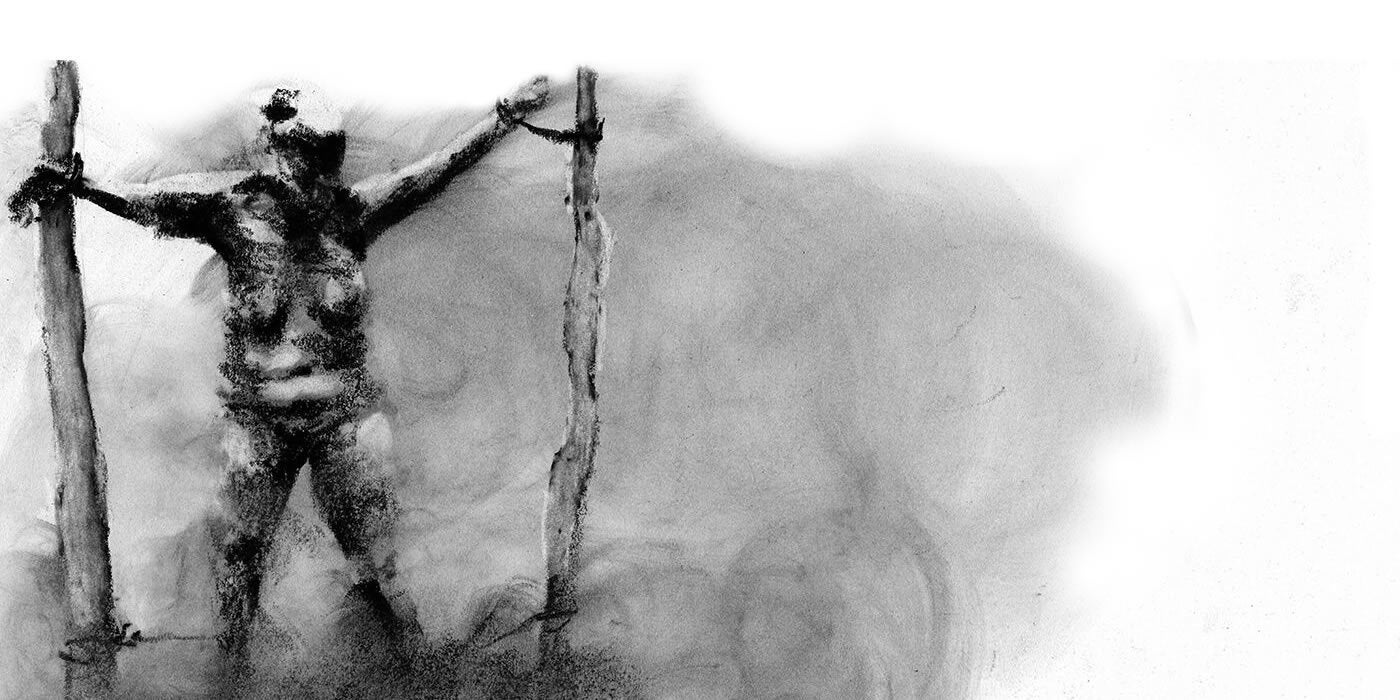
During one of our last evenings together, Monica and I shared many cans of SP beer while sitting on the waterfront porch of a hotel south of Moresby. The tide was lurching onto the plastic-littered beach, where small skiffs—used for dynamite fishing, Monica told me—rested on their sides. I asked if she’d ever considered leaving PNG. She said she has thought about moving in with a sister in Australia, but ultimately she couldn’t see herself abandoning her homeland. Monica then asked me about America. Specifically, about the Salem witch trials.
I told her that, no, I didn’t think witch hunts were necessarily some barbarous relic of an ignorant past. I considered them a perennial, recurrent phenomenon. In the West, witch hunts have coincided with periods of change and instability. They can occur when one sociological, economic, religious or political framework displaces another. The decline of feudalism, the waning of the Roman Catholic Church, the decimation of Europe’s population by the plague, the threat to the American way of life posed by independent women on the frontier, the threat to the American way of life posed by Communism—all of these things precipitated witch hunts.
Witch hunts, I said, were like earthquakes and mountain ranges. They popped up in times of seismic change.
What I wanted to know was: What had happened in that moment when she was accused?
Monica looked down and kicked off her sandals, wiping her small, bare feet over the few grains of sand that lay scattered across the cracked cement. “It changed my mindset completely,” she said. It had been her honest-to-God conversion moment. When she found herself at the center of her village, in the middle of her family and neighbors, her most loved ones, with all of them pointing their fingers at her—only then could she see with absolute clarity that the whole mechanism was a sham. The violence being done to her in the name of justice, or the greater good, or the cosmic order was not at all distinct from the violence and suffering it hoped to suppress.
She finally understood that misfortune was oftentimes random, with no one agent behind it, and that this was perhaps more frightening than the prospect of witches. She also understood that she would most likely spend the rest of her life alone, physically and spiritually. Over the course of three decades, Monica had amassed property, family and friends—only to have those same family and friends suddenly cast her out, confiscate her property and invalidate her past life. Her three children still loved her, but her other relatives considered her subhuman. “When my husband dies,” she said, “I know they will come for me.”
The two of us watched as the sun halved itself on the horizon line. “We have to do a lot of work in this country,” she said. “There has to be a lot of educational programs to change the mindset of the upcoming youth.”
PNG’s young people needed to learn that diseases are caused by germs, she said, and that tragedy cannot always be explained. Such knowledge—part and parcel of the Westernization occurring so rapidly throughout the country—would certainly go a long way toward ending the scapegoating of witches. Yet that education will take many years to achieve. Fewer than 60 percent of the PNG children who start primary school finish it, and only about 10 percent enroll in high school. PNG has some universities—but their graduates tend to leave the country for better-paying work overseas.
“Do you think you’ll live to see the change?” I asked Monica.
“It will take generations for it to change,” she said solemnly. She told me that right now, maybe five out of every 100 PNGers had come to disbelieve witchcraft. That meant the next generation might have 10 disbelievers for every 90 witch hunters, and 20 in the generation after that and so on.
I told her that I, personally, believed witch hunting might come to an end much sooner than that. I had a pessimistic kind of optimism about PNG, I said.
In the span of a century, the West has introduced more change than PNG’s traditional system can handle. Globalization, democracy, internal displacement, the jelasy inherent to consumer capitalism—these have inundated the scapegoating mechanism, which is now working more ferociously than it ever has. But the perverse silver lining about this is the ritual of killing witches no longer effects the cohesion and coherence that it once did. The collateral damage—the death, dislocation and scorched earth that used to impact only the witch—is spilling outwards, finally outweighing the ritual’s social utility.
Monica chortled at my explanation. “I don’t know,” she said. The theorizing didn’t seem to interest her. She had her mission. She was going to disregard her own suffering and alleviate others’, one witch at a time, because this was all she could do. Alone, she couldn’t make her kinsmen see themselves as she saw them; she couldn’t make them understand that it is they who stand accused.
As the wavering sun sank completely below the waves, a streak of neon light flared across the water—an atmospheric phenomenon known as the “green flash.” “Look at that!” Monica exclaimed. “Look! It’s really beautiful!”
We watched in silence as the green dissipated. Then she said, “If a stranger saw this, he’d say, ‘Oh, this is where the witches are going.”
Darkness fell like a curtain. Monica laughed herself hoarse.
Credits
Works Cited
Magazine Pieces and Academic Studies
- Witchcraft Allegations, Refugee Protection and Human Rights: A Review of the Evidence
- The Witch Hunt as a Culture Change Phenomenon
- Sanguma in Paradise; Sorcery, Witchcraft and Christianity in Papua New Guinea
- Sorcery, Witchcraft and Christianity in Melanesia
- Engendered Violence and Witch-killing in Simbu
- Witches' wealth: witchcraft, confession, and Christianity in Auhelawa, Papua New Guinea
- Sorcery among the Plains Arapesh
- Oxfam International: Sorcery beliefs and practices in Gumine: a source of conflict and insecurity
- Sorcery and a Christian Response in the East Sepik
- Witch Hunts in Papua New Guinea's Eastern Highlands Province: A Fieldwork Report
- It’s 2013, and They’re Burning ‘Witches’
- Guns, Germs, and Steel: The Fates of Human Societies
- Into the Crocodile Nest: A Journey Inside New Guinea
- Village on the Edge: Changing Times in Papua New Guinea
- Beyond the Coral Sea: Travels in the Old Empires of the South-West Pacific
- Savage Harvest: A Tale of Cannibals, Colonialism, and Michael Rockefeller's Tragic Quest
- Under the Mountain Wall: A Chronicle of Two Seasons in Stone Age New Guinea
- Jungle People: A Kaingang Tribe of the Highlands of Brazil
- Violence and the Sacred
- The Crone: Woman of Age, Wisdom, and Power
- The Penguin Book of Witches
- The Other
Fictional influences
- Heart of Darkness (Norton Critical Editions)
- The Crucible
- Mister Pip
- The Sheltering Sky
- “A Distant Episode”
- “The Red One”
- Typee: A Peep at Polynesian Life
- A Bend in the River
Documentaries
Photo Essay
